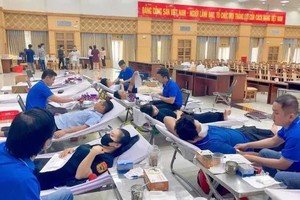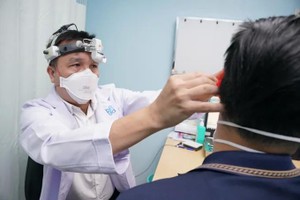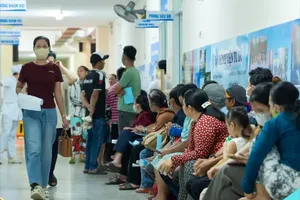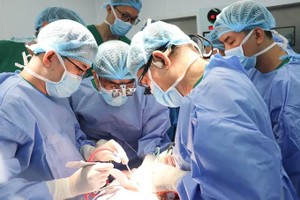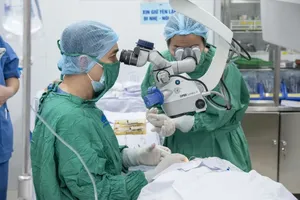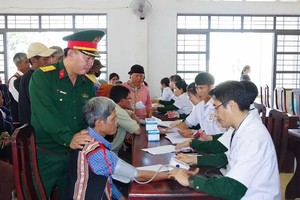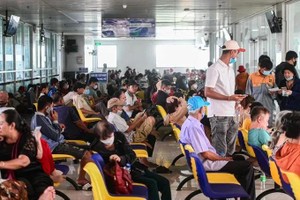The Ministry of Health and the People’s Committee of Ho Chi Minh City held a meeting on February 14 to discuss ways and measures to adopt so as to reduce pressure and overloading in city hospitals.
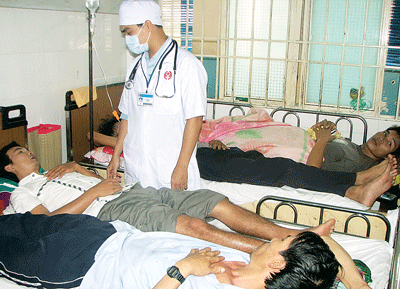
Statistics from the HCMC Department of Health show 13 hospitals that are under the ministry, 31 are general and specialist hospitals, 23 are district hospitals, and 34 are privately run centres. The average rate is 42 beds and 12.2 doctors per ten thousand citizens.
In reality, however, this rate is much lower because most of the city hospitals have to treat a larger number of patients coming from the southern provinces.
According to Nguyen Tan Binh, deputy director of the HCMC Department of Health, 40-62 per cent of patients from southern provinces flock to Tu Du, Hung Vuong Hospitals, the HCMC Hospital of Ophthalmology and the Children’s Hospitals No.1 and 2.
Many patients in the HCMC Hospital of Oncology, Tu Du Hospital, the Children’s Hospitals No.1 and 2, the Hospital for Orthopaedic Surgery and Traumatology have to share a bed or camp in the lobby of the hospitals.
Tran Thanh My, Director of the Hospital for Orthopaedic Surgery and Traumatology, worries that not only his hospital but other smaller medical units that specialise in new treatment techniques are under pressure and overcrowded.
Le Hoang Minh, director of the HCMC Hospital of Oncology, said that besides holding medical training seminars to transfer new techniques, his hospital also cooperates with satellite hospitals in Binh Thanh District to share responsibilities, while encouraging patients living or having relatives in HCMC to become outpatients. As a result, the number of inpatients went down by 10-15 per cent.
Since district hospitals at present only use 60 per cent of their capacity, the best solution at the moment seems to be a stronger collaboration with satellite and district hospitals to reduce pressure on major and specialist hospitals.
By distributing the pressure by transferring patients to satellite hospitals, the number of patients in Ho Chi Minh City showed a decline, proving the effectiveness of this idea.
In fact, the rate of transferred patients fell from 26.9 per cent in 2008 to 20.6 per cent in 2010 and 18.5 in 2011. However, the proportion of patients coming to HCMC of their own choice rose from 73.1 per cent in 2008 to 79.4 per cent in 2010 and 81.5 per cent in 2011.
According to Nguyen Thi Kim Tien, Minister of Health, the city and Hanoi are faced with an overload of patients. Major hospitals such as the Children’s Hospital, the HCMC Hospital of Oncology, the Hospital for Orthopaedic Surgery and Traumatology, Cho Ray Hospital are without branches or satellite hospitals and have no plans of expansion.
As suggested by the Minister, HCMC should step up an investment project for hospital expansion as well as continue to encourage the cooperation between city and satellite hospitals to share responsibilities.
Hua Ngoc Thuan, Vice chairman of the HCMC People’s Committee reported that the city already has begun plans to reduce pressure on hospitals since 2011 by implementing the model of satellite hospitals and moving certain departments of a hospital to lower level medical units in order to take advantage of available space there, which so far has proved successful.
The government has also increased its budget to these hospitals and supports doctors transferring patients to these departments. It is anticipated that in 2012, the city will have an extra 200 rooms to serve patients at the Departments of Orthopedic Surgery, Traumatology and Oncology.
Le Hoang Quan, chairman of the HCMC People’s Committee promised that in 2012, the city will try to fulfill this task to its best ability, build new space for medical facilities and enhance medical treatment quality in order to serve citizens better.



